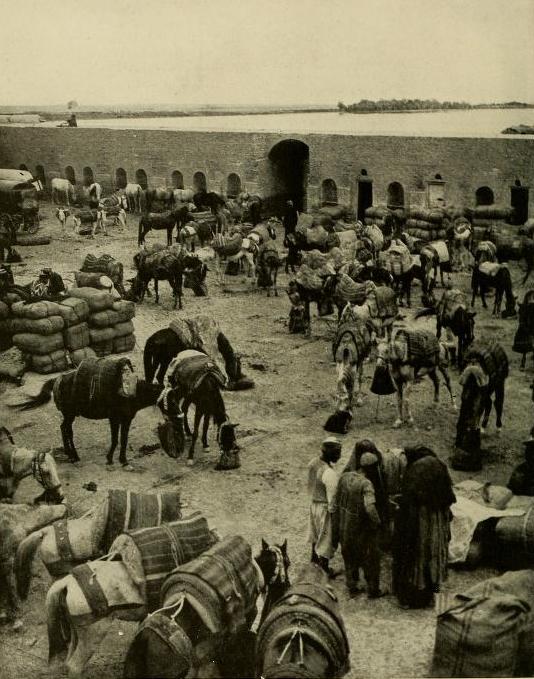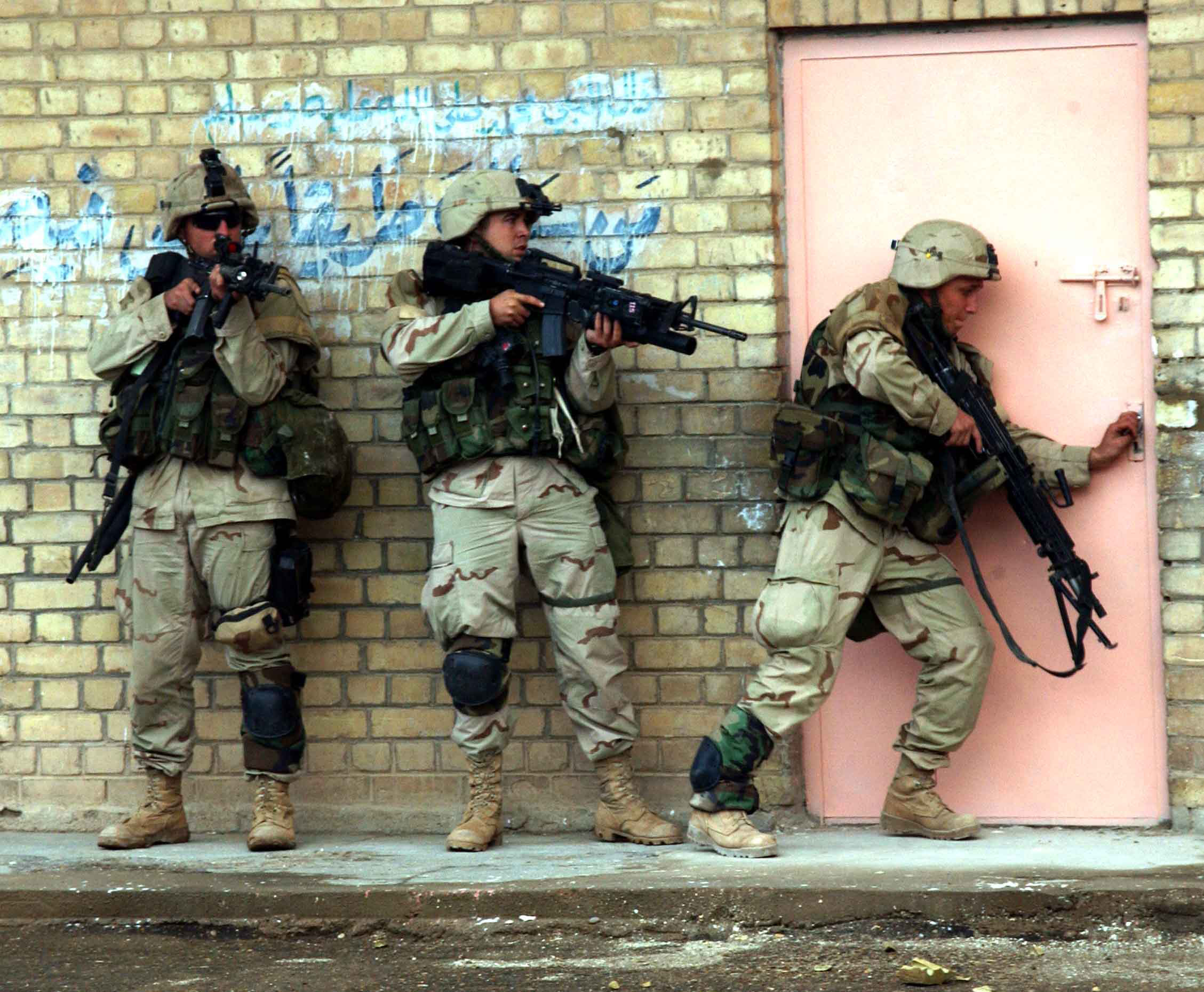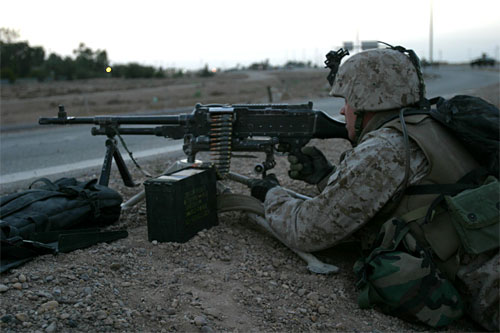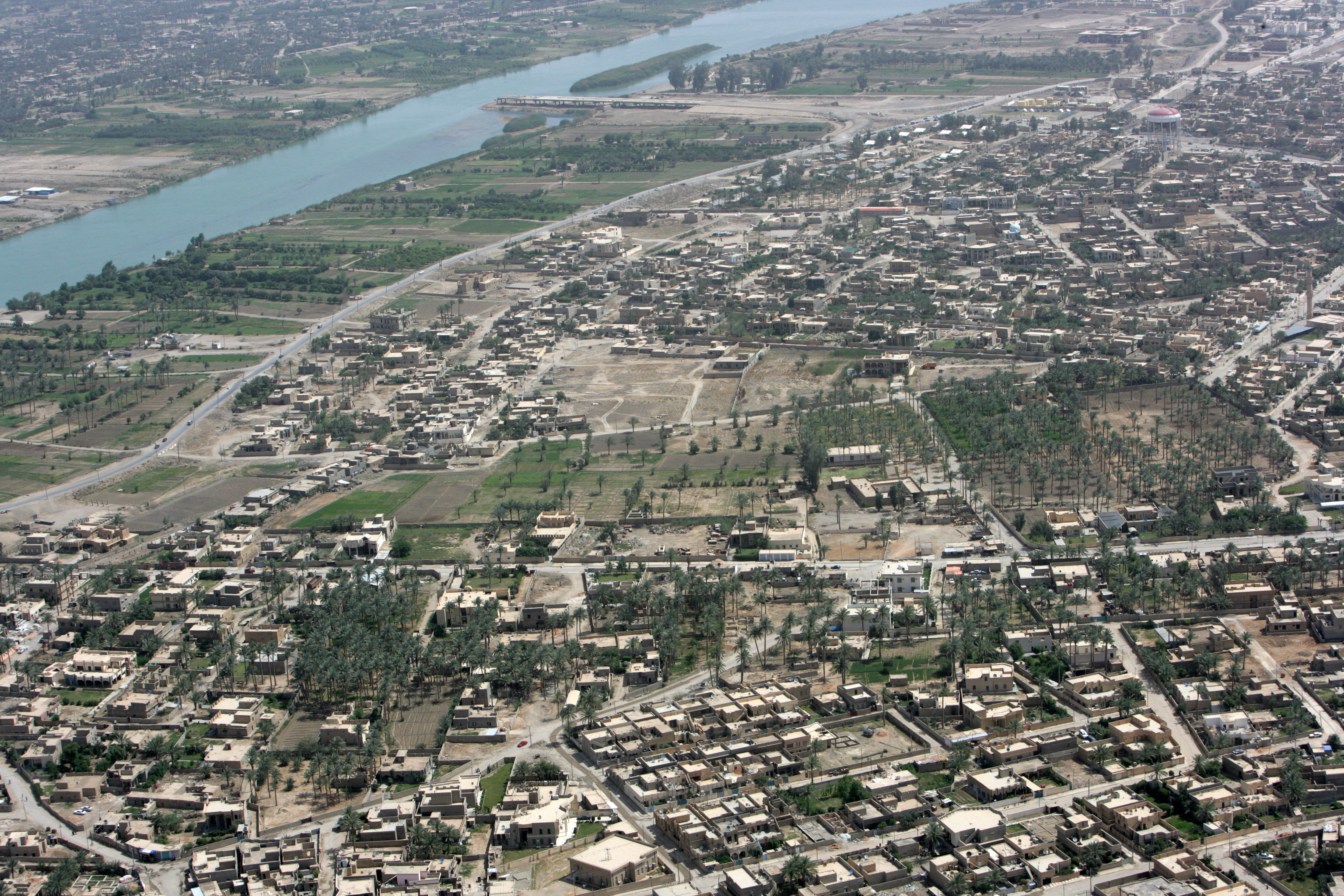|
Fallujah
Fallujah ( ar, ٱلْفَلُّوجَة, al-Fallūjah, Iraqi pronunciation: ) is a city in the Iraqi province of Al Anbar, located roughly west of Baghdad on the Euphrates. Fallujah dates from Babylonian times and was host to important Jewish academies for many centuries. The city grew from a small town in 1947 to having a population of 275,128 inhabitants in 2011. Within Iraq, it is known as the "city of mosques" for the more than 200 mosques found in the city and the surrounding villages. The city became a major center of resistance against the Iraqi government during the Iraqi insurgency and the city was the scene of fierce fighting during the First and Second Battles of Fallujah. These battles left much of the city heavily damaged. In January 2014, the city was captured by the Islamic State and suffered major population loss. On 23 May 2016, Iraqi forces announced the beginning of their attempt to retake Fallujah from IS. On 26 June 2016 the city was declared fully ... [...More Info...] [...Related Items...] OR: [Wikipedia] [Google] [Baidu] |
Third Battle Of Fallujah
The Third Battle of Fallujah, code-named Operation Breaking Terrorism ( ar, عملية كسر الإرهاب) by the Iraqi government, was a military operation against ISIL launched to capture the city of Fallujah and its suburbs, located about west of the Iraqi capital Baghdad. The operation began on 22 May 2016, three months after the Iraqi forces had started the total siege of Fallujah. On 26 June, Iraqi forces recaptured the city of Fallujah, before recapturing the remaining pocket of ISIL resistance in Fallujah's western outskirts two days later. Background Fallujah was the first city seized by ISIL in Iraq in January 2014. Iraqi forces completely surrounded the western city after they recaptured Ramadi in February 2016. ISIL militants prevented people from leaving the city. Fallujah was considered to be the second most important stronghold of ISIL in Iraq, after Mosul. Preparations The Iraqi Army published a statement on 22 May 2016, and asked residents of ... [...More Info...] [...Related Items...] OR: [Wikipedia] [Google] [Baidu] |
Second Battle Of Fallujah
The Second Battle of Fallujah, codenamed Operation al-Fajr ( ar, الفجر, ) and Operation Phantom Fury, was an American-led offensive of the Iraq War that lasted roughly 6 weeks, starting 7th November, 2004. Marking the highest point of the conflict against the Iraqi insurgency, it was a joint military effort carried out by the United States, the Iraqi Interim Government, and the United Kingdom. Within the city of Fallujah, the coalition was led by the U.S. Marine Corps and U.S. Army, the battle was later described as "some of the heaviest urban combat U.S. military have been involved in since the Battle of Huế City in Vietnam in 1968".Ricks, Thomas E. (2007). ''Fiasco: The American Military Adventure in Iraq, 2003–2005''. Penguin. p. 399. . Operation Phantom Fury was the second major coalition effort in Fallujah. Earlier, in April 2004, coalition forces fought the First Battle of Fallujah in an attempt to capture or kill insurgent elements who were considered resp ... [...More Info...] [...Related Items...] OR: [Wikipedia] [Google] [Baidu] |
First Battle Of Fallujah
The First Battle of Fallujah, code-named Operation Vigilant Resolve, was an operation against militants in Fallujah as well as an attempt to apprehend or kill the perpetrators of the killing of four U.S. contractors in March 2004. The chief catalyst for the operation was the highly publicized killing and mutilation of four Blackwater USA private military contractors,Operation Vigilant Resolve, GlobalSecurity.org. and the killings of five American soldiers in Habbaniyah a few days earlier. The battle polarized public opinion within Iraq. Background Fallujah had generally benefited economically under Saddam Hussein, and many residents were employed as military and intelligence officers by his administration. However, there was little sympathy for him following the collapse of his government, which many residents considered oppressive. The city was one of the most religious and culturally traditional areas in Iraq. Following the collapse of the Ba'ath infrastructure in early ... [...More Info...] [...Related Items...] OR: [Wikipedia] [Google] [Baidu] |
Iraqi Insurgency (2003–2011)
An insurgency began in Iraq after the 2003 US-led invasion, and lasted throughout the ensuing Iraq War which lasted from 2003 until 2011. The first phase of the insurgency began shortly after the 2003 invasion and prior to the establishment of the new Iraqi government. From around 2004 to May 2007, Iraqi insurgents primarily targeted the American-led coalition forces, and later also targeted Iraqi security forces. With the full-scale eruption of the sectarian civil war in February 2006, many militant attacks in American-controlled central Iraq were directed at the Iraqi police and military forces of the Iraqi government. The attacks continued during the transitional reconstruction of Iraq, as the Iraqi government tried to establish itself. Civil war and sectarian violence ended in mid 2008 and the insurgency continued through the American withdrawal from Iraq in 2011. After the withdrawal in December 2011, a renewed wave of sectarian and anti-government insurgency swept ... [...More Info...] [...Related Items...] OR: [Wikipedia] [Google] [Baidu] |
Al Anbar Governorate
Al Anbar Governorate ( ar, محافظة الأنبار; ''muḥāfaẓat al-’Anbār''), or Anbar Province, is the largest governorate in Iraq by area. Encompassing much of the country's western territory, it shares borders with Syria, Jordan, and Saudi Arabia. The population is mostly Sunni Muslims. The provincial capital is Ramadi; other important cities include Fallujah and Al-Qa'im. The governorate was known as Ramadi up to 1976 when it was renamed Al Anbar Province, and it was known as Dulaim before 1962. A large majority of the inhabitants of the province are Sunni Muslims and most belong to the Dulaim tribe, all of which speak Arabic. In early 2014, the Islamic State, with the assistance of some local Sunni militias, launched a successful campaign to seize control of the province from the Iraqi government. Numerous offensive actions were undertaken by the Iraqi government, with the assistance of local Sunni tribes to remove ISIL's occupation of the province, especial ... [...More Info...] [...Related Items...] OR: [Wikipedia] [Google] [Baidu] |
Fallujah District
Fallujah ( ar, قضاء الفلوجة) is a district in Al Anbar Governorate, Iraq. Its seat is the city of Fallujah. Cities *Fallujah (pop. 350,000) * Saqulauiah * Amiriyah Fallujah * Al Karmah * Al Enaimih * Habbaniyah (pop. 80,000) * Al Rahaliyah * Al Khaldiya *Al Zaidan Al Zaidan or Zaidan is an agricultural village just west of Baghdad, Iraq. During the US occupation Iraq, it was considered a hub of insurgent activity (especially by the 1920 Revolution Brigade) It is populated mainly by the Zobai tribe. T ... * Al Fars Districts of Al Anbar Governorate References {{reflist ... [...More Info...] [...Related Items...] OR: [Wikipedia] [Google] [Baidu] |
Iraq
Iraq,; ku, عێراق, translit=Êraq officially the Republic of Iraq, '; ku, کۆماری عێراق, translit=Komarî Êraq is a country in Western Asia. It is bordered by Turkey to the north, Iran to the east, the Persian Gulf and Kuwait to the southeast, Saudi Arabia to the south, Jordan to the southwest and Syria to the west. The capital and largest city is Baghdad. Iraq is home to diverse ethnic groups including Iraqi Arabs, Kurds, Turkmens, Assyrians, Armenians, Yazidis, Mandaeans, Persians and Shabakis with similarly diverse geography and wildlife. The vast majority of the country's 44 million residents are Muslims – the notable other faiths are Christianity, Yazidism, Mandaeism, Yarsanism and Zoroastrianism. The official languages of Iraq are Arabic and Kurdish; others also recognised in specific regions are Neo-Aramaic, Turkish and Armenian. Starting as early as the 6th millennium BC, the fertile alluvial plains between Iraq's Tigris and Euphrates ... [...More Info...] [...Related Items...] OR: [Wikipedia] [Google] [Baidu] |
Districts Of Iraq
Iraq's 18 governorates are subdivided into 120 districts (''kaza''). The district usually bears the same name as the district capital. The districts are listed below, by governorate (with capital in parentheses): Al Anbar Governorate * Al-Qa'im District ( Al-Qa'im) * Ar-Rutba District ( Ar-Rutba) * Anah District ( Anah) * Fallujah District ( Fallujah) * Haditha District ( Haditha) * Hīt District ( Hīt) * Ramadi District (Ramadi) * Rawah District ( Rawah) Muthanna Governorate * Al-Khidhir District ( Al-Khidhir) * Al-Rumaitha District ( Al-Rumaitha) * Al-Salman District ( Al-Salman) * Al-Samawa District (Samawa) Qadisiyyah Governorate * Afaq District ( Afaq) * Al-Shamiya District ( Al-Shamiya) * Diwaniya District (Diwaniya) * Hamza District ( Hamza) Babil Governorate * Al-Mahawil District ( Al-Mahawil) * Al-Musayab District ( Al-Musayab) * Hashimiya District ( Hashimiya) * Hilla District ( Hilla) Baghdad Governorate * Administrative Districts i ... [...More Info...] [...Related Items...] OR: [Wikipedia] [Google] [Baidu] |
Pumbedita
Pumbedita (sometimes Pumbeditha, Pumpedita, or Pumbedisa; arc, פוּמְבְּדִיתָא ''Pūmbəḏīṯāʾ'', "The Mouth of the River,") was an ancient city located near the modern-day city of Fallujah, Iraq. It is known for having hosted the Pumbedita Academy. History The city of Pumbedita was said to have possessed a Jewish population since the days of Second Temple of Jerusalem. The city had a large Jewish population and was famed for its Pumbedita Academy - whose scholarship, together with the city of Sura, gave rise to the Babylonian Talmud. The academy there was founded by Judah ben Ezekiel in the late third century. The academy was established after the destruction of the academy of Nehardea. Nehardea, being the capital city, was destroyed during the Persian-Palmyrian war. The twelfth-century travel account of Benjamin of Tudela Benjamin of Tudela ( he, בִּנְיָמִין מִטּוּדֶלָה, ; ar, بنيامين التطيلي ''Binyamin al-Tutayli ... [...More Info...] [...Related Items...] OR: [Wikipedia] [Google] [Baidu] |
History Of The Jews In Iraq
The history of the Jews in Iraq ( he, יְהוּדִים בָּבְלִים, ', ; ar, اليهود العراقيون, ) is documented from the time of the Babylonian captivity c. 586 BC. Iraqi Jews constitute one of the world's oldest and most historically significant Jewish communities. The Jewish community of what is termed in Jewish sources "Babylon" or "Babylonia" included Ezra the scribe, whose return to Judea in the late 6th century BCE is associated with significant changes in Jewish ritual observance and the rebuilding of the Temple in Jerusalem. The Babylonian Talmud was compiled in "Babylonia", identified with modern Iraq. From the biblical Babylonian period to the rise of the Islamic caliphate, the Jewish community of "Babylon" thrived as the center of Jewish learning. The Mongol invasion and Islamic discrimination in the Middle Ages led to its decline. Under the Ottoman Empire, the Jews of Iraq fared better. The community established modern schools in the seco ... [...More Info...] [...Related Items...] OR: [Wikipedia] [Google] [Baidu] |
Anbar (town)
Anbar ( ar, الأنبار, al-Anbār, syr, ܐܢܒܐܪ, Anbar,) also known by its original ancient name, Peroz-Shapur, was an ancient and medieval town in central Iraq. It played a role in the Roman–Persian Wars of the 3rd–4th centuries, and briefly became the capital of the Abbasid Caliphate before the founding of Baghdad in 762. It remained a moderately prosperous town through the 10th century, but quickly declined thereafter. As a local administrative centre, it survived until the 14th century, but was later abandoned. Its ruins are near modern Fallujah. The city gives its name to the Al-Anbar Governorate. History Origins The city is located on the left bank of the Middle Euphrates, at the junction with the Nahr Isa canal, the first of the navigable canals that link the Euphrates to the River Tigris to the east. The origins of the city are unknown, but ancient, perhaps dating to the Babylonian era and even earlier: the local artificial mound of Tell Aswad date ... [...More Info...] [...Related Items...] OR: [Wikipedia] [Google] [Baidu] |
Governorates Of Iraq
Iraq consists of 19 governorates ( ar, محافظة, muḥāfażah; ckb, پارێزگا , parêzgeh), also known as "provinces". Per the Iraqi constitution, governorates can form an autonomous region. Four governorates, Erbil, Sulaymaniyah, Duhok, and Halabja, constitute the autonomous Kurdistan Region. Baghdad (which is the most populous) and Basra are the oldest standing provinces of Iraq. The second most-populous province, Ninawa (also called Nineveh) is in the upland and quite cool climate of the north-west. Through early 2014, the Council of Ministers of the government of Iraq approved proposals to add the three newest governorates: *Tal Afar, from part of Ninawa Governorate *Tuz Khurmatu, from part of Saladin Governorate * Halabja from part of the Sulaymaniyah Governorate. Another proposal exists to add a 20th: Fallujah, from the relevant part of the Al Anbar. This largely did not occur due to the ISIS insurgency. Following the defeat of ISIS in the Battle ... [...More Info...] [...Related Items...] OR: [Wikipedia] [Google] [Baidu] |

.jpg)




